I wanted to plot a 3D Cube of Size 1.0 and return a dictionary of Coordinates if the center coordinate is provided.
import matplotlib.pyplot as plt
from mpl_toolkits.mplot3d import Axes3D
#Concept.py
def printer(Coordinates):
A = B = C = 1.0
X,Y,Z = Coordinates
S = 1.0
Q = 1.0
O2 = [X,Y,Z]
O1 = [X, Y - S, Z]
O3 = [X, Y + S, Z]
A1 = [X - Q, Y - Q, Z - Q]
B1 = [X + Q, Y - Q, Z - Q]
C1 = [X + Q, Y - Q, Z + Q]
D1 = [X - Q, Y - Q, Z + Q]
E1 = [X, Y - Q, Z - Q]
F1 = [X + Q, Y - Q, Z]
G1 = [X, Y - Q, Z + Q]
H1 = [X - Q, Y - Q, Z]
A2 = [X - S, Y, Z - S]
B2 = [X + S, Y, Z - S]
C2 = [X + S, Y, Z + S]
D2 = [X - S, Y, Z + S]
E2 = [X, Y, Z - S]
F2 = [X + S, Y, Z]
G2 = [X, Y, Z + S]
H2 = [X - S, Y, Z]
A3 = [X - Q ,Y + Q, Z - Q]
B3 = [X + Q ,Y + Q, Z - Q]
C3 = [X + Q ,Y + Q, Z + Q]
D3 = [X - Q ,Y + Q, Z + Q]
E3 = [X, Y + Q, Z - Q]
F3 = [X + Q, Y + Q, Z]
G3 = [X, Y + Q, Z + Q]
H3 = [X - Q, Y + Q, Z]
# print A1, B1, C1, D1, E1,
# print F1, G1, H1, O1, A2,
# print B2, C2, D2, E2, F2,
# print G2, H2,A3, B3, C3,
# print D3, E3, F3, G3, H3, O3
fig = plt.figure()
ax = fig.add_subplot(111, projection='3d')
h = [A1, B1, C1, D1, E1, F1, G1, H1, O1,
A2, B2, C2, D2, E2, F2, G2, H2,
A3, B3, C3, D3, E3, F3, G3, H3, O3]
hx, hy, hz = zip(*h)
ax.plot(hx,hy,hz, "o-")
hold = {"A1": A1, "B1": B1, "C1": C1, "D1": D1,
"E1": E1, "F1": F1, "G1": G1, "H1": H1,
"O1": O1, "A2": A2, "B2": B2, "C2": C2,
"D2": D2, "E2": E2, "F2": F2, "G2": G2,
"H2": H2, "A3": A3, "B3": B3, "C3": C3,
"D3": D3, "E3": E3, "F3": F3, "G3": G3,
"H3": H3, "O3": O3}
plt.show()
return {i:eval(i) for i in hold}
printer([0,0,0])
I wanted the result look like:

Problem: 1.) It is returning the Error:
Traceback (most recent call last):
File "concept.py", line 59, in <module>
printer([0,0,0])
File "concept.py", line 57, in printer
return {i:eval(i) for i in hold}
File "concept.py", line 57, in <dictcomp>
return {i:eval(i) for i in hold}
File "<string>", line 1, in <module>
NameError: name 'O3' is not defined
2.) Though the The plot is showing:

PS: I am aware of Python/matplotlib : plotting a 3d cube, a sphere and a vector?. But I don't know how to get coordinates from there or define my center.